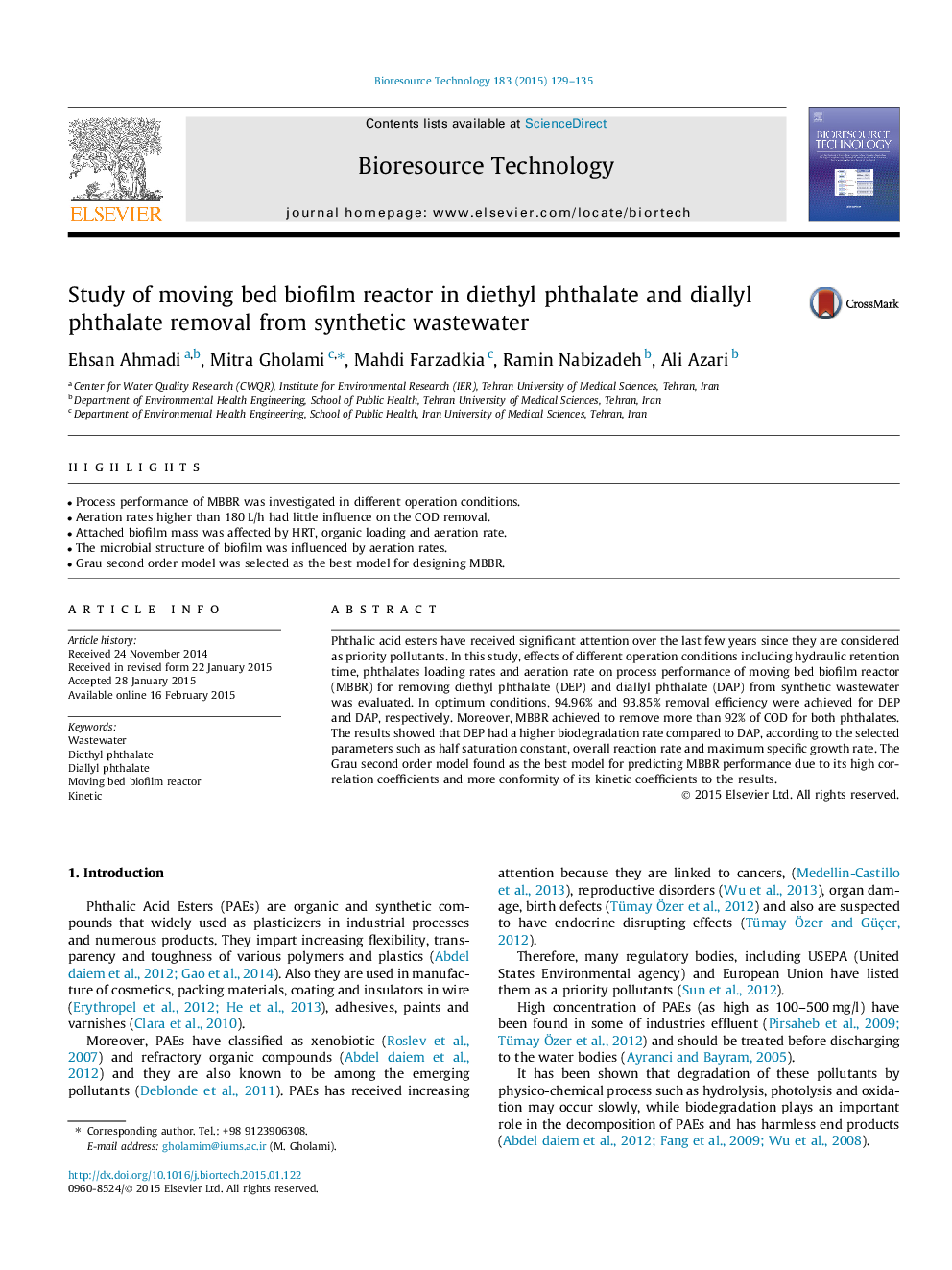| Article ID | Journal | Published Year | Pages | File Type |
|---|---|---|---|---|
| 679867 | Bioresource Technology | 2015 | 7 Pages |
•Process performance of MBBR was investigated in different operation conditions.•Aeration rates higher than 180 L/h had little influence on the COD removal.•Attached biofilm mass was affected by HRT, organic loading and aeration rate.•The microbial structure of biofilm was influenced by aeration rates.•Grau second order model was selected as the best model for designing MBBR.
Phthalic acid esters have received significant attention over the last few years since they are considered as priority pollutants. In this study, effects of different operation conditions including hydraulic retention time, phthalates loading rates and aeration rate on process performance of moving bed biofilm reactor (MBBR) for removing diethyl phthalate (DEP) and diallyl phthalate (DAP) from synthetic wastewater was evaluated. In optimum conditions, 94.96% and 93.85% removal efficiency were achieved for DEP and DAP, respectively. Moreover, MBBR achieved to remove more than 92% of COD for both phthalates. The results showed that DEP had a higher biodegradation rate compared to DAP, according to the selected parameters such as half saturation constant, overall reaction rate and maximum specific growth rate. The Grau second order model found as the best model for predicting MBBR performance due to its high correlation coefficients and more conformity of its kinetic coefficients to the results.
